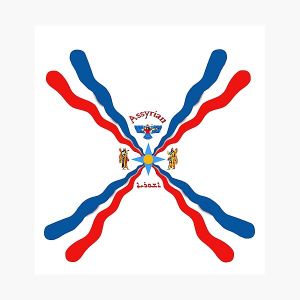Language/Assyrian-neo-aramaic/Grammar/How-to-Use-Have
Hi Assyrian Neo-Aramaic learners! 😊
In this lesson, we will learn how to use "have" in Assyrian Neo-Aramaic. Knowing how to use "have" is essential in any language as it helps us express possession, actions we have done or experienced, and many other things. By the end of this lesson, you will have a better understanding of how to use "have" comfortably and confidently in your Assyrian Neo-Aramaic conversations. Let's get started!
Consider exploring these related pages after completing this lesson: How to Use Be & Pronouns.
The Verb "Have" in Assyrian Neo-Aramaic
The verb "have" in Assyrian Neo-Aramaic is كن (kon). We use it in different ways, depending on the tense we are using. In the present tense, we use the verb "have" by adding the suffix -ta on the verb root كن (kon).
Present Tense
We add the suffix -ta to the verb root كن (kon) to form the present tense of "have" in Assyrian Neo-Aramaic. Let's look at some examples to make this concept clearer:
Examples:
| Assyrian Neo-Aramaic | Pronunciation | English |
|---|---|---|
| كَلْبُون دِيْلَــــــْيُوتَا | kalbun dilayutā | My dog has a tail. |
| عندِي يَهْرَةِتَا | ʿindī yahratā | I have a cat. |
| عَكْوفْي غِطَا | ʿakwōfī ghida | My uncle has a car. |
Note: The verb "to be" in present tense helps indicate possession as well. For example, "kalbun dilayu" (my dog) can also be rephrased as "aywa-dilayu-kon" (it is mine).
Past Tense
In the past tense, we use a different pattern for the verb "have" in Assyrian Neo-Aramaic. We add the suffix -eet or -et to the verb root كن (kon).
Examples:
| Assyrian Neo-Aramaic | Pronunciation | English |
|---|---|---|
| عِنْدَهُ اِسْتـــــَرْدِيْت | ʿindahu ʾistardeet | He had breakfast. |
| لَقِيتُ بَعِضَ الأَصْدِقَاــــــءَ | laqeetu baʿiḍa al-ʾaṣdiqāʾa | I met some friends. |
| شَغَلْيَا بَـــــيْتَهَا | shaghalyā baytaha | She worked at her house. |
Future Tense
In Assyrian Neo-Aramaic, we use the verb "have" in the future tense by using the present tense of the verb "to be" and adding the word "going" before the main verb. For example: ʾaw-tawen-id-dinya-kon (I'm going to have a life).
Using "Have" to Express Experiences
We can use the verb "have" in Assyrian Neo-Aramaic to express experiences. Here are some examples:
Examples:
- Person 1: لَــــــيَّوَا وَ الْحَاوَةِيُوتَا، كُلُون خَالِي
- Person 2: لَا بِيْهَكَ
- Person 1: Lēyawā wal-ḥāwatayūtā, kulun khāly
- Person 2: Lā bīhaka
- Person 1: I had a great time and delicious food, it was my uncle's.
We can also use "have" to express actions that we have done in the past:
Examples:
| Assyrian Neo-Aramaic | Pronunciation | English |
|---|---|---|
| شُفْنَا كُلَّ شَيْء | shufnā kulla shayʾ | We have seen everything. |
| نَحْنَ أَخَذْنَا قَرَارًا | naḥna ʾakhadhnā qarārā | We have made a decision. |
| وَضَعْتَ الْلَّوْحَةَ فِي الْمَكَانِ الْمُنَاسِـــبِ | waḍʿta al-lawḥa fī al-makāni al-munāsib | You have placed the board in the right place. |
Tips on Practicing How to Use "Have" in Assyrian Neo-Aramaic
To improve your knowledge of how to use "have" in Assyrian Neo-Aramaic, you can do the following:
1. Listen to examples of conversations in Assyrian Neo-Aramaic that contain the verb "have." 2. Practice with a language partner through chatting or asking questions. 3. Review the Grammar section of the Assyrian Neo-Aramaic language learning website.
Conclusion
In this lesson, we have learned how to use the verb "have" in Assyrian Neo-Aramaic. Remember that we use different forms of "have" according to the tense we are using. We can also use "have" to express experiences and actions we have done. Keep practicing with a language partner and listening to conversations containing "have" in Assyrian Neo-Aramaic to improve your understanding of how to use "have" naturally in your Assyrian Neo-Aramaic conversations.
➡ If you have any questions, please ask them in the comments section below.
➡ Feel free to edit this wiki page if you think it can be improved. 😎
Finished this lesson? Check out these related lessons: Adjectives & Conditional Mood.

